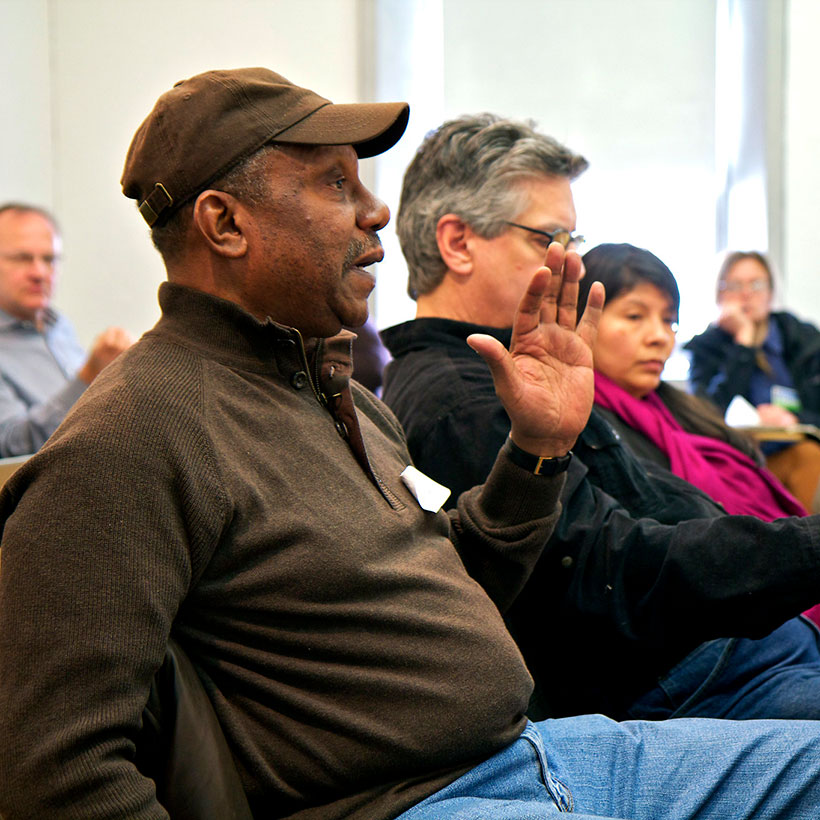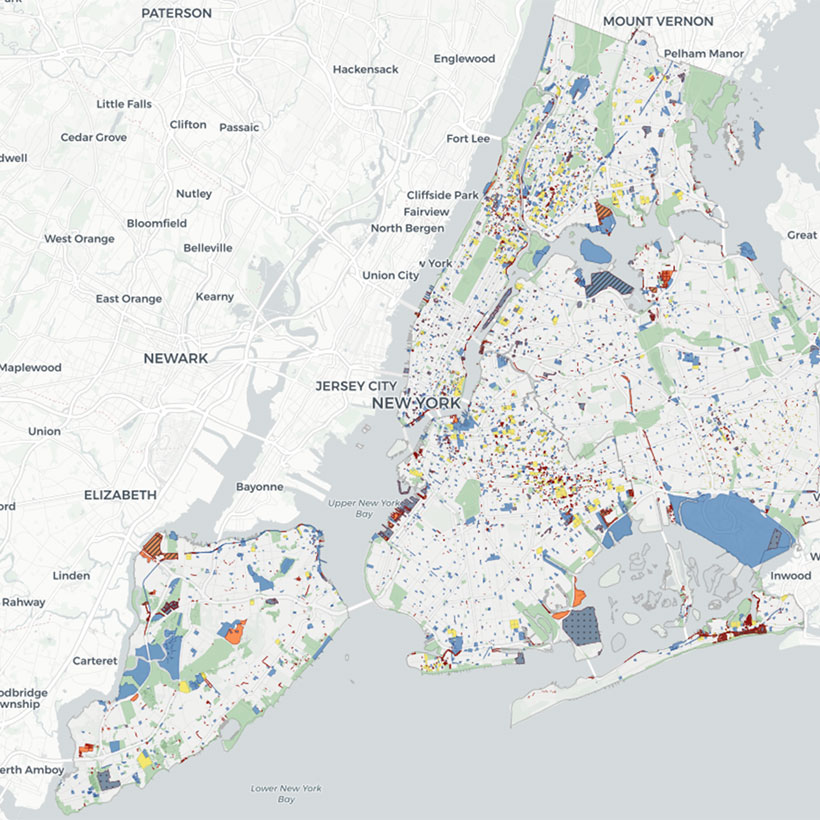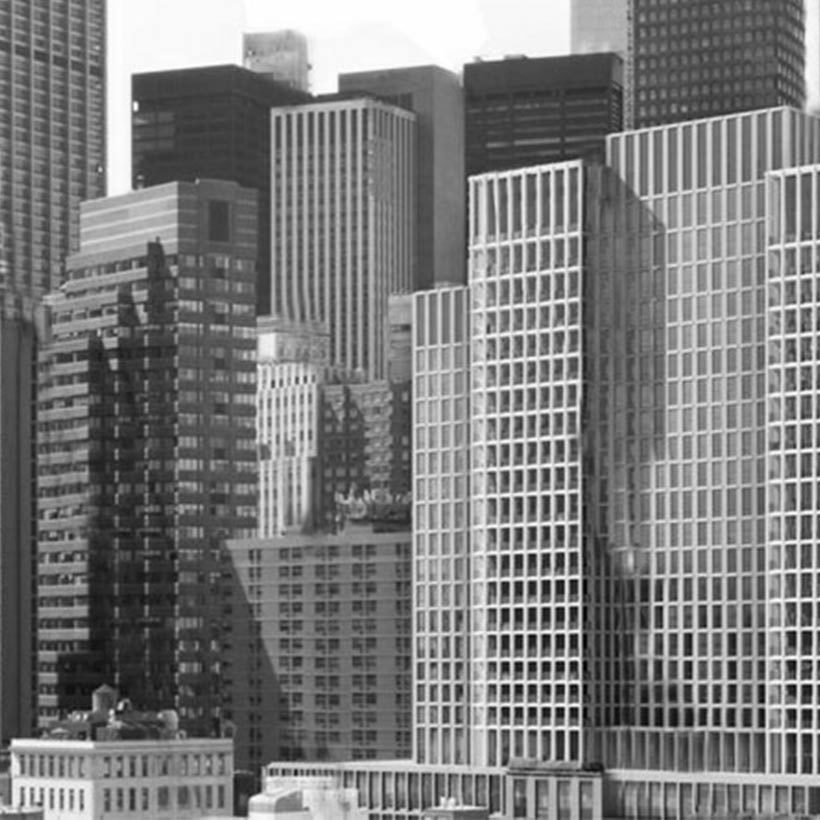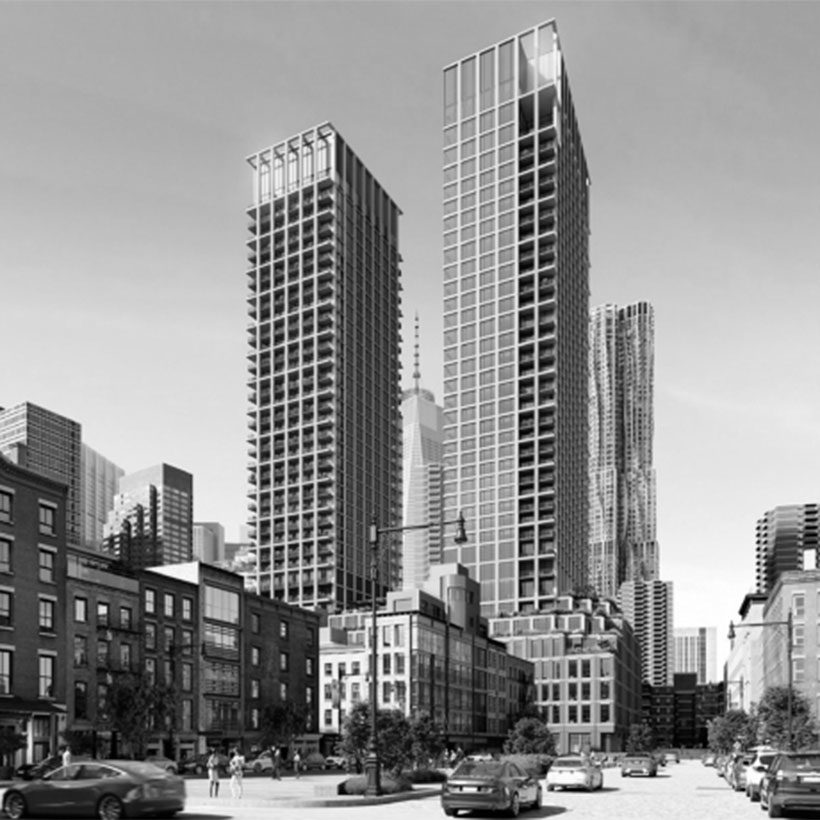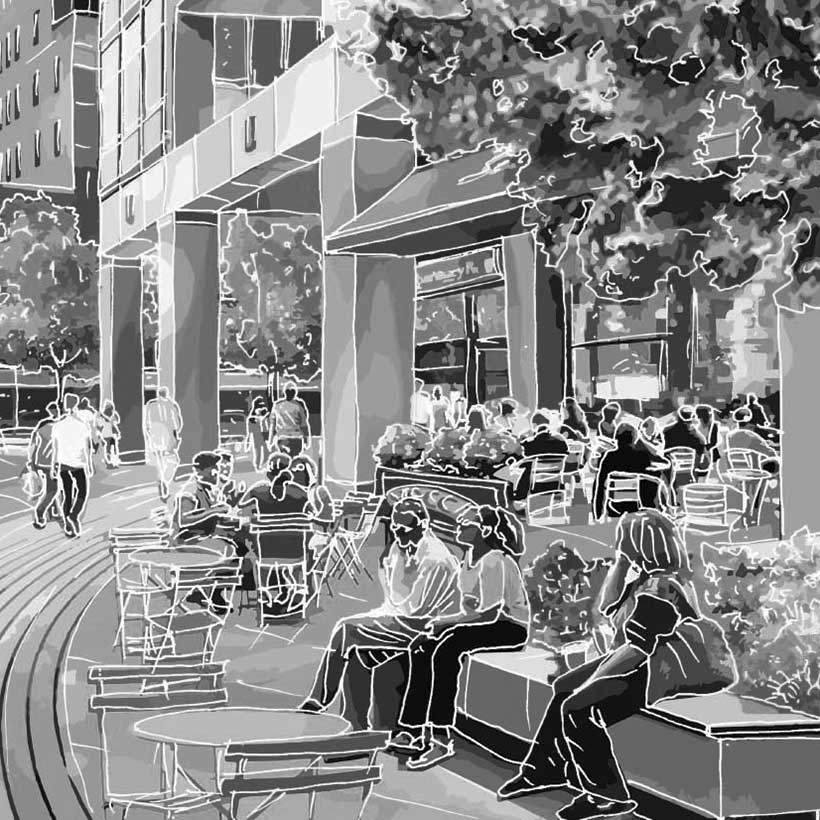Benefits and Scope of South Street Seaport Plan Remain Obscure
Comments to the City Planning Commission
The Municipal Art Society of New York (MAS) has long engaged with the South Street Seaport’s evolution since the conceptualization of the South Street Seaport Museum in 1965. Regarding the recent proposal to develop the parking lot at 250 Water Street by the Howard Hughes Corporation (250 Seaport District LLC), MAS has extensively analyzed and followed the proposal’s evolution at the Landmarks Preservation Commission (LPC).
The Howard Hughes Corporation (HHC) seeks a special permit, modifications to the South Street Seaport/Pier 17 Large Scale General Development (LSGD), zoning text amendments, and authorizations from the City Planning Commission (CPC) to facilitate the development of a 395-foot-tall mixed-use building that would contain approximately 680,500-gross square feet (gsf) of market-rate and affordable housing, retail, office, and community facility spaces at 250 Water Street. In addition to the land use actions outlined above, the proposal would also facilitate the restoration, reopening, and potential expansion of the South Street Seaport Museum (the museum) by providing an undisclosed amount of funding.
However, the full array of project benefits, the scope of each individual benefit, and the reliability of them, remains obscure. At its root, we object to the transfer of City-owned development rights to a private party without clear disclosure of what agencies, institutions, and projects ultimately benefit. The original intent of the Seaport Subdistrict was to have transferable development rights benefit the South Street Seaport Museum, not a city agency or private developer. We urge the Commission not to depart from the City’s historic zoning intent for the Seaport. As we continue to advocate for sound planning, policy, and transparency in the land use process, we urge the City Planning Commission to recommend disapproval of the project.
Download Testimony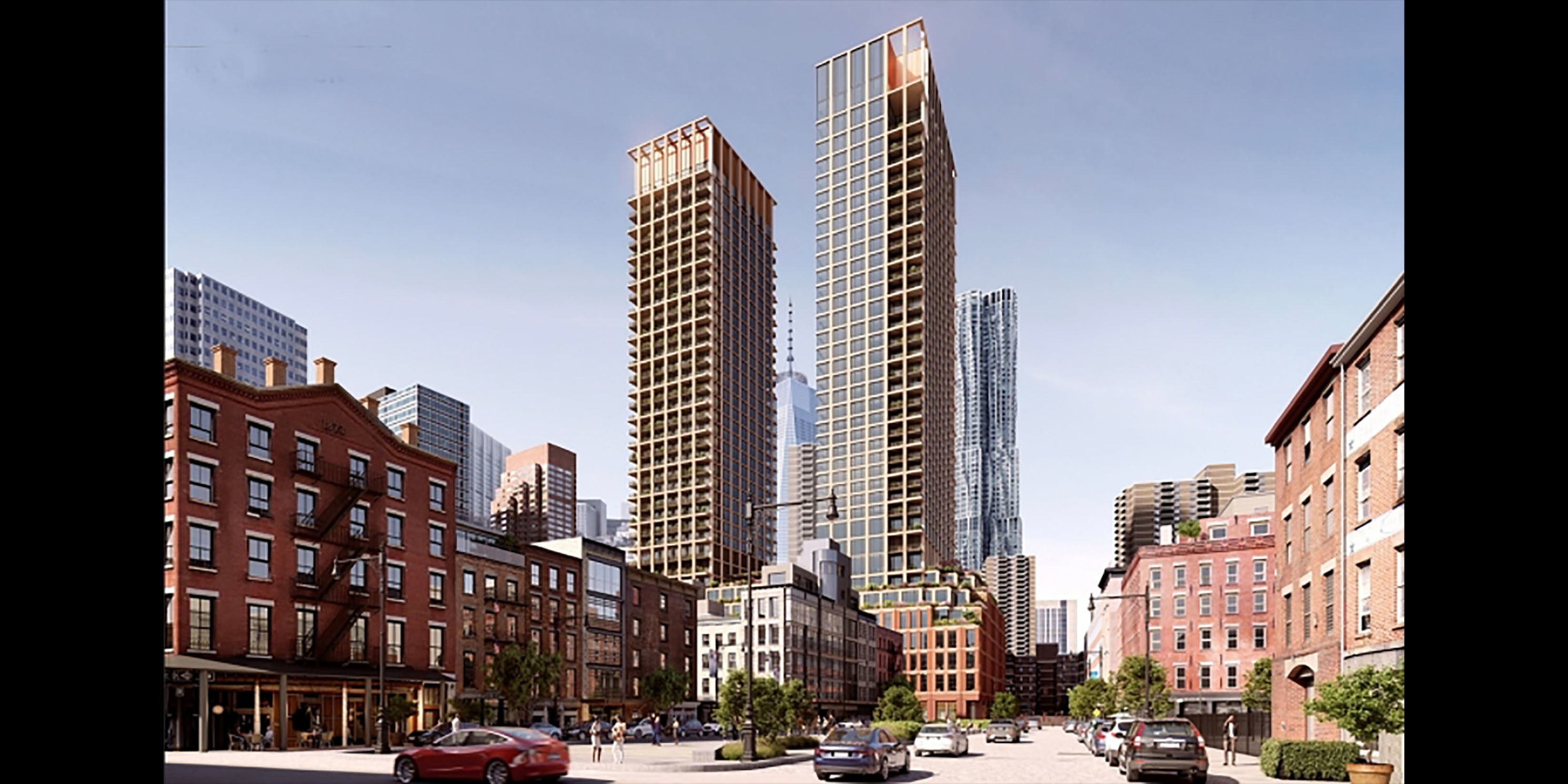
Land Use, Zoning, and Public Policy
Among the many actions the applicant seeks is the modification to the South Street Seaport/Pier 17 LSGD, which would consolidate the existing Pier 17 LSGD, the pedestrian streets (Fulton, Water, and Front Streets), and 250 Water Street into a single large-scale general development. The applicant also seeks a LSGD special permit to facilitate the transfer of 208,000 square feet of unused development rights from Pier 17 to 250 Water Street. Moreover, the applicant is also seeking zoning text amendments to designate 250 Water Street as a receiving site and a certification to transfer the remaining 30,216 square feet of development rights from the Development Rights Bank to 250 Water Street.
From a policy perspective, MAS is fundamentally opposed to allowing the transfer of a City asset to a private developer through this triad of city discretionary actions. The City could achieve many of the benefits through more direct mechanisms than the one contemplated. In essence, the City is currently transferring development rights to EDC and HHC with some funding ultimately benefiting the South Street Seaport Museum, instead of having the sale of development rights fully benefit the museum.
Throughout the CEQR process, we have urged the City not to depart from the historic zoning intent of the Seaport. By moving new development inland near more similarly scaled buildings, the Draft Environmental Impact Statement (DEIS) justifies the distribution of the development rights from Pier 17 to 250 Water by preserving the low-scale character of the waterfront.1 In fact, this rationale actually undermines the original intent of the Special South Street Seaport District dating back to 1972, which was to maintain the historic context and facilitate the transfer of development rights outside the district to benefit the Seaport Museum. 250 Water Street was originally included in the district but was not designated as a receiving site. With this proposal, 250 Water Street would become a receiving site and the development rights transfer would benefit a private developer first, then the City, and finally the museum. Moreover, the Seaport Subdistrict was rezoned in 2003 at the behest of Community Board 1 to adjust the underlying zoning to be more consistent with the South Street Seaport Historic District. We continue to support the intent of the 2003 rezoning and maintain that the City’s historic zoning policy for the Seaport be respected. MAS would support an appropriately scaled development at 250 Water Street while transferring the balance of development rights outside the South Street Seaport Historic District.
Therefore, the Final Environmental Impact Statement (FEIS) must include the existing LSGD plan, proposed LSGD plan, and visuals of Pier 17 with the modifications proposed. As for the proposed transfer of development rights, MAS maintains that the FEIS must disclose the City-owned development rights value, the legal process of facilitating the development rights transfer, in addition to any other anticipated disposition actions and development rights transfers as part of this proposal. Without the disclosure of other actions, the public does not have the information to evaluate whether the proposal can be fully executed as planned and publicly discussed.
Funding for the Seaport Museum
Although it is claimed that the proposed funding for the Seaport Museum is not part of the land use process, HHC has marketed it as an integral component of the 250 Water Street development proposal. Therefore, more details must be disclosed about this process. According to the DEIS, the survival of the museum is contingent on the proposal moving forward; however, as of the June 14th Manhattan Community Board 1 Land Use Committee meeting, HHC still did not provide the public any details about the funding proposal. At this point, as emphasized by Manhattan Borough President Gale Brewer,2 there is no guarantee that the original $50 million will be offered to the Seaport Museum, despite the DEIS stating the “funding provided to the museum would stabilize and strengthen its finances, setting the stage for its potential expansion.”
MAS stands firm in that details of the funding mechanism must be finalized before this proposal can be approved by the Commission. The City must disclose details concerning the type and amount of funding to be dedicated, the legal mechanism by which the museum will secure the funding, a timeline for when the development rights will be transferred and funding will be provided to the museum, and how it will be enforced in the future. Additionally, we urge the City to disclose details about the museum’s current financial outlook, its current budget for the proposed expansion on the John Street lot, and what purposes the funds will be put to by the museum or others to benefit the museum (whether the funds will go towards a capital campaign or the museum’s endowment). Moreover, the City must disclose any vulnerabilities that might affect the disposition of museum funds, i.e., any circumstances in which the funding would not be provided if the project is approved. The City must be transparent regarding the future transfer of the John Street lot (a separate ULURP action) in order to facilitate the proposed museum expansion. Lastly, the City must disclose how the assumed 2026 build year for the museum expansion was calculated.
Affordable Housing
According to the Howard Hughes Corporation, the proposed project will bring 70 affordable family units to follow the Mandatory Inclusionary Housing (MIH) program at 40 percent AMI (~$45,000 for a family of four). According to the DEIS, “additional actions to facilitate the Proposed Project and effectuate other changes to the affected area may include…funding decisions and grant of an Article XI Tax Incentive by the Department of Housing Preservation and Development (HPD).” While we believe in the importance of building affordable housing throughout the city, especially in high-opportunity and transit-rich areas such as Manhattan Community Board 1, since this proposal does not fall under the official MIH program, there are many unanswered questions about the affordable housing component of the proposal.
Accordingly, since there is no guarantee of the proposed affordable housing units at this point, the FEIS must disclose the details of the regulatory aspect of the affordable units, such as the timeline for receiving potential tax incentives, the amount of tax incentives, and what agency will regulate and ensure long-term affordability of the proposed affordable units. Additionally, as stated in our DSOW comments, the FEIS must disclose the official affordability levels and the breakdown of the number of bedrooms proposed for all dwelling units. Lastly, we take issue with the distribution of the market-rate units on the top floors and affordable units in the lower portion of the tower.
Environmental Impacts of the Proposal
Shadows and Open Space
Shadows from the proposed development will have significant adverse impacts on area open space. According to the DEIS, the proposal’s shadow would pass across portions of the Southbridge Towers complex open spaces from “early to late morning in the spring, summer, and fall, covering large areas at times, and significantly altering the use of the spaces for users seeking sun, and potentially impacting the health of the trees and plantings in one limited area.” Therefore, the FEIS should evaluate potential design changes, including different massing and decreases in building height, and alternatives that mitigate shadow impacts on the Southbridge Towers complex open spaces, while still achieving the intended goals of bringing affordable housing to the area.
In addition to concerns about shadows, we question the overall lack of publicly accessible open space and attention to the public realm. We strongly recommend that more open space be provided and that it be publicly accessible 24 hours per day. We recommend that the FEIS include a detailed site plan showing the proposed layout and amenities of the public open space, particularly at Peck Slip between Water Street and Pearl Street.
Historic and Cultural Resources
As emphasized in our DSOW comments, with its location in the South Street Seaport Historic District, the proposal will have significant impacts on historic and cultural resources. The FEIS must provide a detailed conservation plan for Schermerhorn Row. We also recommend transparency in archaeological monitoring and testing where possible during excavation of the development site and the area identified for the potential museum expansion. Lastly, we recommend coordination with LPC concerning any Construction Protection Plan (CPP) prepared.
Hazardous Materials
We are encouraged that the project has entered the New York State Brownfield Cleanup Program to remediate the significant on-site contamination caused by its prior use as a former thermometer factory and workshop. As recommended by Borough President Brewer, the City and the applicant must inform the public about ongoing remediation work, including, but not limited to, mercury delineation, soil borings, well monitoring, and groundwater sampling. We recommend the FEIS include the link to the State’s website3 specific to the cleanup at 250 Water Street.
Alternatives
The lack of comprehensively evaluated alternatives for this proposal leaves the public and decision-makers with a dearth of information they should have a right to expect. This project was revised a great many times in dialogue with LPC. There is every reason to believe that a robust evaluation of alternatives could have found compromises that would achieve the developer’s goals and worthy public benefits.
Conclusion
MAS recognizes the importance of developing 250 Water Street, especially since the site has remained a vacant parking lot for decades. We also underscore the significance of building affordable housing in high-opportunity and transit-rich areas such as Manhattan Community Board 1. However, we strongly urge that the principles embodied in the City’s zoning policy actions for more than 40 years be respected. If permitted, this proposal would significantly depart from the City’s zoning intent and may subsequently be a negative precedent for historic districts citywide. Lastly, questions concerning the transfer of development rights to a private entity and the South Street Seaport Museum’s funding must be addressed immediately. Therefore, we urge the City Planning Commission to recommend disapproval of the project.
Notes
- DEIS Chapter 1: Project Description and Analytical Framework, page 1-6.
- manhattanbp.nyc.gov.
- 250bcp.com.

